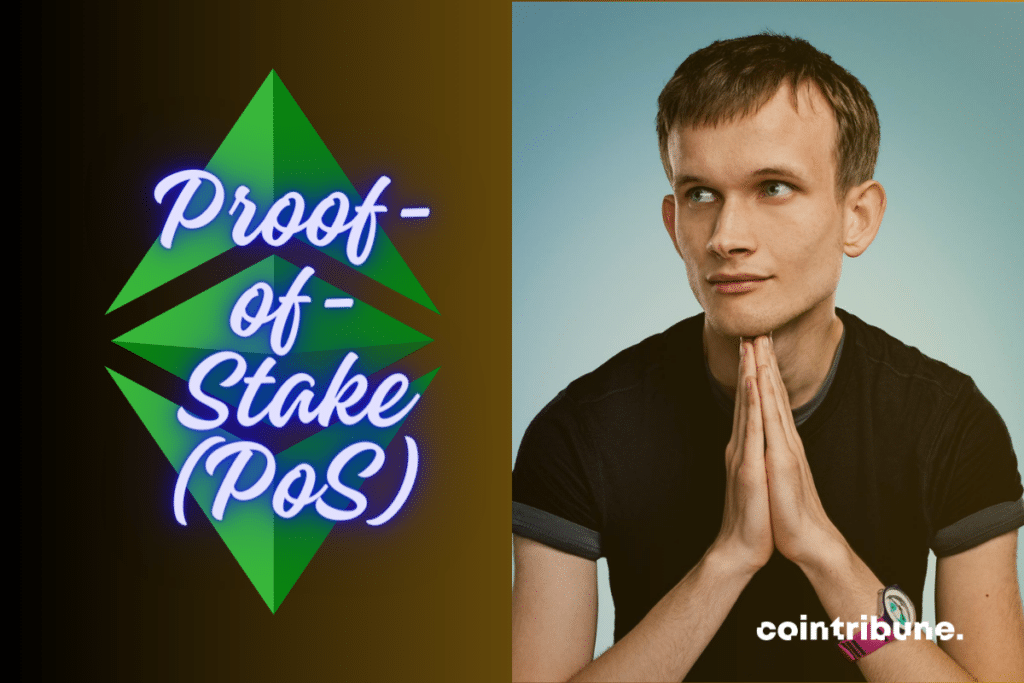ICYMI: Vitalik Buterin proposes three ways to make Ethereum’s proof of stake design simplerhttps://t.co/AnkUfnZF59
— The Block (@TheBlock__) December 28, 2023
A
A
Ethereum: Vitalik Buterin's Solution to Simplify Proof-of-Stake (PoS)
Fri 29 Dec 2023 ▪
4
min read ▪ by
Getting informed
▪
Before closing out the year 2023, Vitalik Buterin hatched an unprecedented solution to improve Ethereum’s consensus mechanism. Or rather to solve a problem of systemic complexity at the heart of the world’s 2nd largest blockchain’s Proof-of-Stake. Here’s an overview!

Is Ethereum’s PoS in Danger?
The series of alternating upgrades by Ethereum (The Merge, Shapella, Dencun, Holesky…) reflect the development team’s commitment to propel the network towards heights not yet reached by others.
But Vitalik Buterin, as a co-founder, is the strict, perfectionist type. In his view, the Ethereum blockchain has several flaws: lack of network decentralization, excessive use of Layer 1, existence of backdoors in all Layer 2s, inappropriate DAO governance of pools, and so on.
Although improved by The Merge and Shanghai-Capella, alias Shapella, upgrades, Ethereum’s staking mechanism is still in need of improvement for Vitalik.
The article associated with this Tweet by The Block highlights a determined Vitalik Buterin to solve a potential problem related to Ethereum’s PoS. But what is really going on? In fact, the proper functioning of the network requires a large number of digital signatures utilizing cryptography by the validators.
To Vitalik Buterin, this represents a significant workload for these network guardians. However, the arrival of new validators is likely to complicate things: the more their numbers grow, the higher the need for signatures will get.
To make matters worse, the new improvements planned by the Ethereum team could further complicate the process. In a short while, additional signatures will be added to those already required by the PoS mechanism. Hello cumbersomeness!
And let’s note in passing that Vitalik Buterin stakes only a tiny portion of his ETH due to the lack of multi-signature wallets.
What Does the Russo-Canadian Genius Propose?
Concerned about the future of his blockchain, this computer genius brings three distinct solutions to the table.
8192 signatures per slot, how can this be achieved? «Assuming a traditional two-round consensus protocol (as what Tendermint uses, and as what SSF will inevitably use), you need two signatures per slot per participating validator. We need to get around this reality. I see three main approaches to achieve this,» continues Vitalik in his article published on ETH Research.
Here is the summary of these approaches:
- significantly increase the minimum amount of ETH required to run a validator in decentralized staking pools;
- establish two levels of stakers, with the first group being more demanding and the second less so;
- randomly select validators according to the time slot.
In short, these solutions for the overhaul of Ethereum’s Proof-of-Stake mechanism seem to be in line with the protocol improvement plan proposed by Vitalik in which he promoted “minimum viable encapsulation.”
Maximize your Cointribune experience with our "Read to Earn" program! For every article you read, earn points and access exclusive rewards. Sign up now and start earning benefits.
A
A
La révolution blockchain et crypto est en marche ! Et le jour où les impacts se feront ressentir sur l’économie la plus vulnérable de ce Monde, contre toute espérance, je dirai que j’y étais pour quelque chose
DISCLAIMER
The views, thoughts, and opinions expressed in this article belong solely to the author, and should not be taken as investment advice. Do your own research before taking any investment decisions.